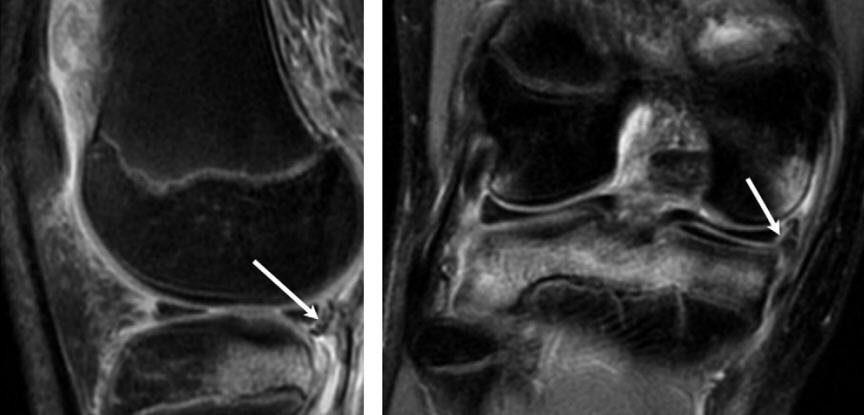博文
儿童膝关节半月板损伤用核磁共振MRI检查结果准确么?
|||
Pediatric Orthopedics Department, Clocheville Hospital, Tours University Hospital Center, 37044 Tours cedex, France.
Traumatic meniscal lesions in children must be diagnosed quickly and efficiently as a priority in order to conserve the meniscus and safeguard the future of the knee. They are often isolated and difficult to identify clinically. In the diagnostic work up stage, an excessive resort to diagnostic arthroscopy has given way to increasing use of MRI by radiologists without pediatric specialization. The present study examined the agreement between MRI aspect and arthroscopic exploration in traumatic meniscal lesions in children.
PATIENTS AND METHODS:Sixty-nine knees in children aged 9 to 16 years having undergone MRI followed by arthroscopyfor knee trauma between 1995 and 2008 were included in a retrospective design. Discoid meniscus was excluded. Files were reviewed by a single clinician and MRI scans by a radiologist specialized in pediatric pathology. Cases of epiphyseal fusion were excluded. All files were analyzable. Agreement with arthroscopic findings as reference was assessed for presence, location and type of meniscal lesion.
RESULTS:Overall agreement with arthroscopy was respectively 78% and 82% on first and second MRI readings: 77% and 80% for the medial, and 78% and 84% for the lateral meniscus. On the first reading, there were 13 false positives for the medial and 5 for the lateral meniscus, versus 9 and 0 respectively on second reading. Overall sensitivity was 70% on first reading and 64% on second, and overall specificity 81% and 90%, respectively.
DISCUSSION:The present results, in line with the literature, may appear encouraging, but hide considerable disparity between analysis of the medial and of the lateral meniscus: MRI overestimated medial and underestimated lateral meniscuslesions.
CONCLUSION:MRI serves only as a support and does not provide sure diagnosis of meniscus lesion. Interpretation should take account of the clinical examination and the pediatric orthopedic specialist's experience.
https://blog.sciencenet.cn/blog-394169-606877.html
上一篇:有症状的肩关节肩袖损伤
下一篇:肩关节损伤的初步病情评估流程

